OPINIONS
Date: 17 June 2020
Piotr Wilczek, Ambassador of the Republic of Poland to the United States of America
Poland-U.S. Cooperation In The Years 2016-2020. Facts And Figures
Poland’s relations with the United States have strengthened considerably in recent years thanks to our cooperation in the fields of energy, security and defense. This article presents some of the most important issues that Warsaw and Washington have faced together over the past four years.
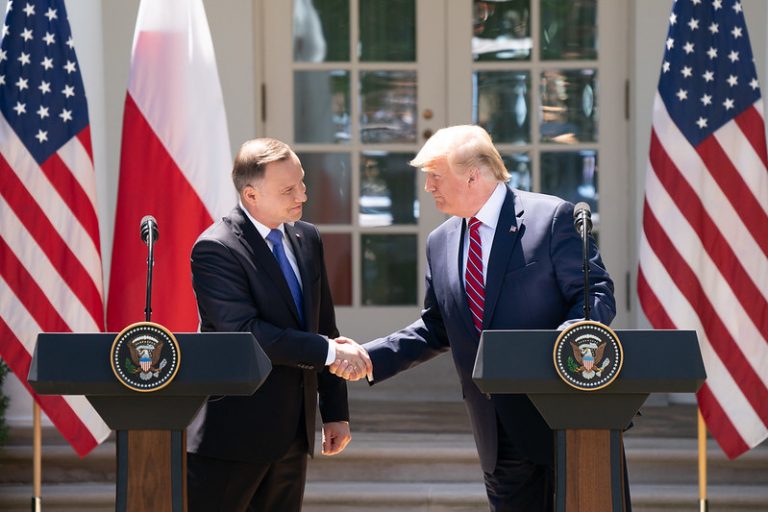
In November 2018, “Rzeczpospolita” and “The Hill” published an article by U.S. Ambassador to Poland Georgette Mosbacher and myself, titled, “The US-Poland bond is stronger than ever.” We wrote:
“The friendship and cooperation between the United States and Poland determined many of the dramatic milestones of the last century. In 1982, support from Pope John Paul II, who was born and raised in Poland, and President Ronald Reagan, who supported Poland’s Solidarity movement, helped Poland break free from the Soviet orbit and emerge as a democratic nation. Today, the friendship and mutual understanding between President Donald J. Trump and President Andrzej Duda enhances the strong history of cooperation between our two nations, which are enjoying a high point in bilateral relations.
The close cooperation between our two countries was stressed in the ‘Declaration on Polish-American Strategic Partnership’ signed at the White House by Presidents Trump and Duda on Sept. 18, 2018. The language of the Declaration underscores that our bilateral relationship is built on a foundation of respect for and commitment to, common democratic values and principles, including freedom, independent institutions and human rights. It also emphasizes the strong ties and common interests between our countries in the areas of security and defense, energy, trade and investment, research and innovation. As ambassadors for our respective countries, we will work tirelessly to ensure that the objectives of the Declaration are carried out through concrete actions.”
Now, a year and a half after the article’s publication, when international affairs have become especially complicated as a result of the coronavirus pandemic, it is important for us to recall the fundamental facts and figures regarding Poland-U.S. cooperation over the last few years. Often times, these figures disappear in the deluge of interpretive journalism and surface-level analyses.
Polish society’s pro-American sentiments, as well as both the Polish President and government’s steadfast support of deepening relations with the United States, have given me great pleasure in realizing my mission as the Polish Ambassador in Washington, D.C. Excellent personal relations between the presidents of our two countries have translated into good working relations with the U.S. administration, which is vital to our everyday work as diplomats. In attempting to determine if and to what degree we have been able to deepen our cooperation with Washington over the course of the past few years, we must look at our bilateral relations within the broader context of U.S. domestic and foreign policy. These relations, of course, do not develop within a vacuum. An important context has been Washington’s relationship with Moscow, particularly after the latter’s annexation of Crimea and occupation of parts of eastern Ukraine. At the same time, we have been developing Poland-U.S. relations during a time of growing tensions between the United States and China and the former’s pivot towards Asia. Changes in America’s foreign policy goals are not always conducive to strengthening its relations with European allies. Nevertheless, in the case of Poland, our achievements in recent years are truly remarkable.
Over the past few years, the frequency of high-level meetings has been very reassuring. Meetings shared by the Polish and U.S. Presidents, the U.S. Vice President, as well as several visits between U.S. cabinet members and ministers from the Polish government, have resulted in many agreements of great importance to Poland and Poland-U.S. cooperation. Relations between our two countries should be judged on the basis of concrete results in the areas of political, trade, science and defense cooperation. As such, I would like to present the facts regarding these areas of cooperation within the past number of years, beginning from the time when I had the privilege and joy of actively participating in their flourishing.
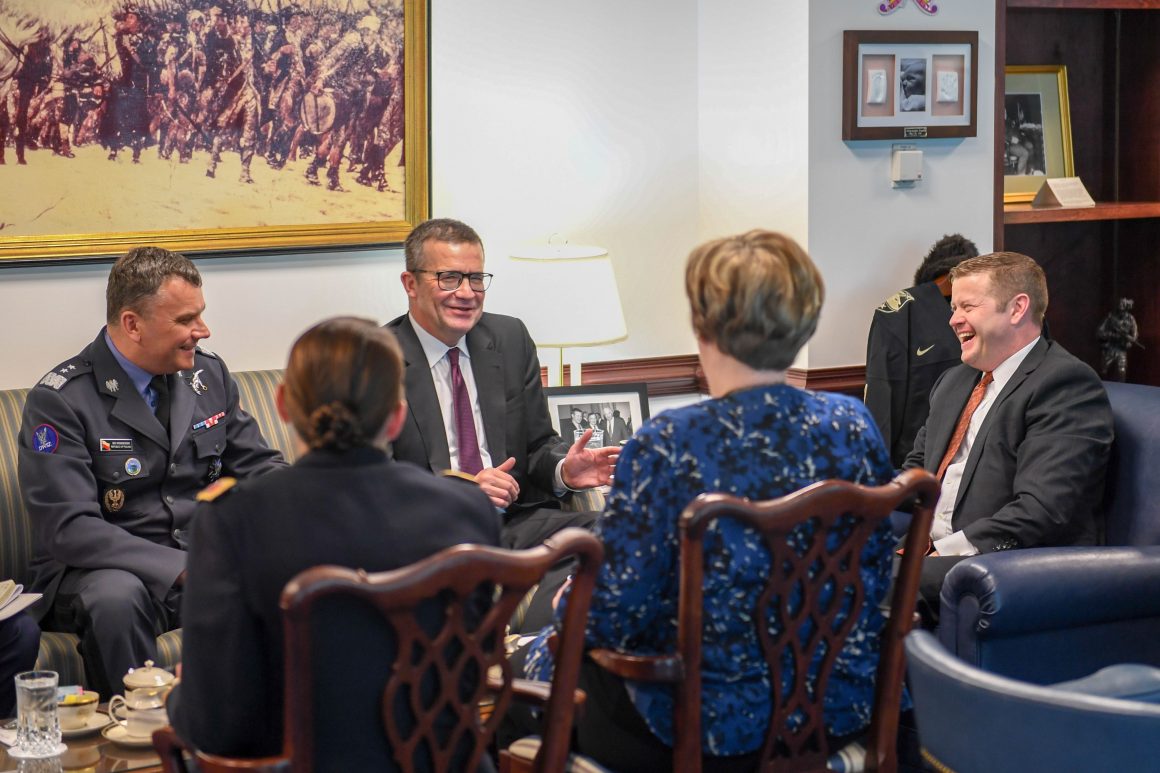
VISITS, AGREEMENTS AND DECLARATIONS
President Donald Trump visited Warsaw in July 2017 during his second international trip as President. His stay in the Polish capital was not only focused on our bilateral relations, but also tied to his participation in the Three Seas Initiative. President Andrzej Duda officially visited Washington for the first time in 2018. Both presidents signed the Joint Statement on “Safeguarding Freedom, Building Prosperity Through United States–Poland Strategic Partnership.” The statement broadened the ability for the U.S. administration to help support and realize Polish security goals, including the strengthening of the American military presence in Poland, cooperation in the energy sector, as well as deepening trade ties and bilateral investments. President Andrzej Duda’s most recent visit to the White House took place in June 2019.
Vice President Mike Pence visited Poland in September 2019. He and Prime Minister Mateusz Morawiecki signed the U.S.-Poland Joint Declaration on 5G. It is worth recalling that in addition to the aforementioned official visits, President Andrzej Duda visited the U.S. on several other occasions, including: in 2016, when he took part in the Nuclear Security Summit in Washington, D.C.; visiting New York City every year in September for the annual United Nations General Assembly session; in May 2018, when he met with the Polish community in New York and Chicago; in December 2018, when he attended the funeral of the late President George H. W. Bush; and his visit to the United States in June 2019, which included stops in Washington, Texas, Nevada and California. His most recent visit has resulted in many tangible results in the fields of energy, medical, scientific and technical cooperation with these states.
June 2019 was particularly fruitful with regards to the signing of specific agreements, including: the “Joint Declaration on Defense Cooperation Regarding United States Force Posture in the Republic of Poland,” signed by both Presidents at the White House, as well as two intergovernmental agreements: the “Agreement on Preventing and Combatting Serious Crime,” signed by Deputy Minister of Internal Affairs and Administration Krzysztof Kozłowski and Deputy Secretary of Homeland Security David P. Pekoske, as well as the “Agreement between the Government of the Republic of Poland and the Government of the United States of America on Cooperation on Border Security and Immigration,” signed by the acting Secretary of Homeland Security, Chad F. Wolf, and myself. These two agreements constituted an important step in Poland’s eventual inclusion in the Visa Waiver Program.
Also in June 2019, Government Plenipotentiary for Strategic Energy Infrastructure Piotr Naimski and U.S. Secretary of Energy Rick Perry signed an agreement on strategic cooperation in the field of civil nuclear energy, and the presidents of PGNiG and Venture Global LNG signed a contract on supplying LNG from the U.S. to Poland.
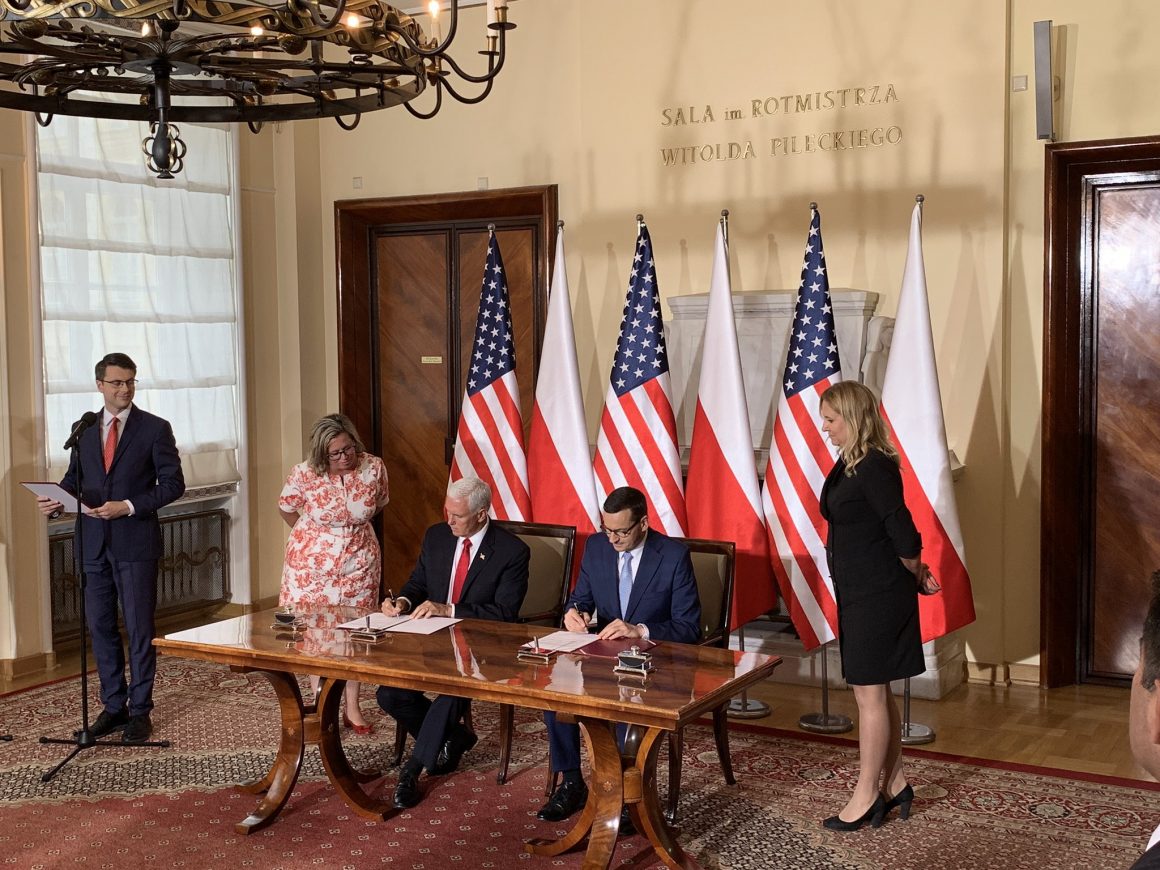
Our increasingly frequent interactions are evidenced by the fact that over the last few years, several dozen Polish governmental and parliamentary delegations have visited the United States every year. In 2019 alone, the Polish Embassy in Washington, D.C. participated and co-participated in facilitating approximately 70 visits by official Polish delegations at various levels. In 2017-2019, the Polish Minister of Foreign Affairs made several visits to the U.S. every year. Although they were always bilateral in nature, they also coincided with important multilateral events, including NATO summits and conferences on the fight against ISIS and on religious freedom. Visits led by the Minister of National Defense and his deputies on cooperation in the field of defense were also frequent. Cooperation between other governmental agencies, including our health departments, also developed (in July 2018, an agreement on cooperation in the field of health and medical sciences was signed). Parliamentary contact between Poland and the United States is also frequent, including meetings between representatives of the Polish Sejm and members of the House of Representatives and the Senate Committee on Foreign Relations.
It is also worth mentioning the many visits that took place on matters of trade, including then-Deputy Prime Minister Mateusz Morawiecki’s visit to Washington in April and October of 2017 (meetings with Secretary of Commerce Wilbur Ross and other representatives of the administration and business circles); Minister Witold Waszczykowski’s visit to Houston in December 2017 on the occasion of the opening of the city’s Consulate General (including talks with the local business community, Polish diaspora businesses, energy companies Cheniere and ExxonMobil and a visit to the Sabine Pass LNG terminal); Minister of Investment and Development Jerzy Kwieciński’s visit to Seattle in July 2018 (including talks on Poland’s economic cooperation with the state of Washington, particularly in the area of high technology and innovation; meetings with, among others, representatives of Amazon, Microsoft and Boeing regarding the expansion of these entities’ presence in Poland and deepening cooperation with their Polish partners, including academic centers and R&D institutions); Deputy Minister of Infrastructure Mikołaj Wild’s visit regarding the Central Communication Port project (including talks with representatives from the administration and businesses about the possibility of American involvement in this project).
TRADE
According to data provided by the U.S. Department of Commerce, U.S. commodity exports to Poland in 2019 amounted to USD 5.96 billion, an increase of 11.4% compared to 2018. Imports from Poland in the same period, on the other hand, increased by 4.3%, from USD 8.04 billion to USD 8.38 billion. As a result, the total trade in goods between the USA and Poland reached USD 14.34 billion and was 7.1% higher than one year prior. The U.S. trade deficit with Poland amounted to USD 2.42 billion and was USD 270 million lower than one year prior. Due to the fact that the frequency of trade was higher than in the case of some other countries, Poland became the United States’ 37th most important trade partner, up from its previous 40th place[1].
The United States is Poland’s 9th most important trade partner and 4th amongst countries that are not members of the European Union (after China, Russia and Great Britain). The U.S.’ share in Poland’s foreign trade in 2019 was 3.06%. Exports to the U.S. rank 8th among the most important destinations for the delivery of Polish goods abroad, and in 2019 constituted a 2.87% share of all Polish exports. Imports from the United States during this period accounted for 3.24% of the total supply of goods to Poland, which placed the country in 8th place among the most important import destinations.
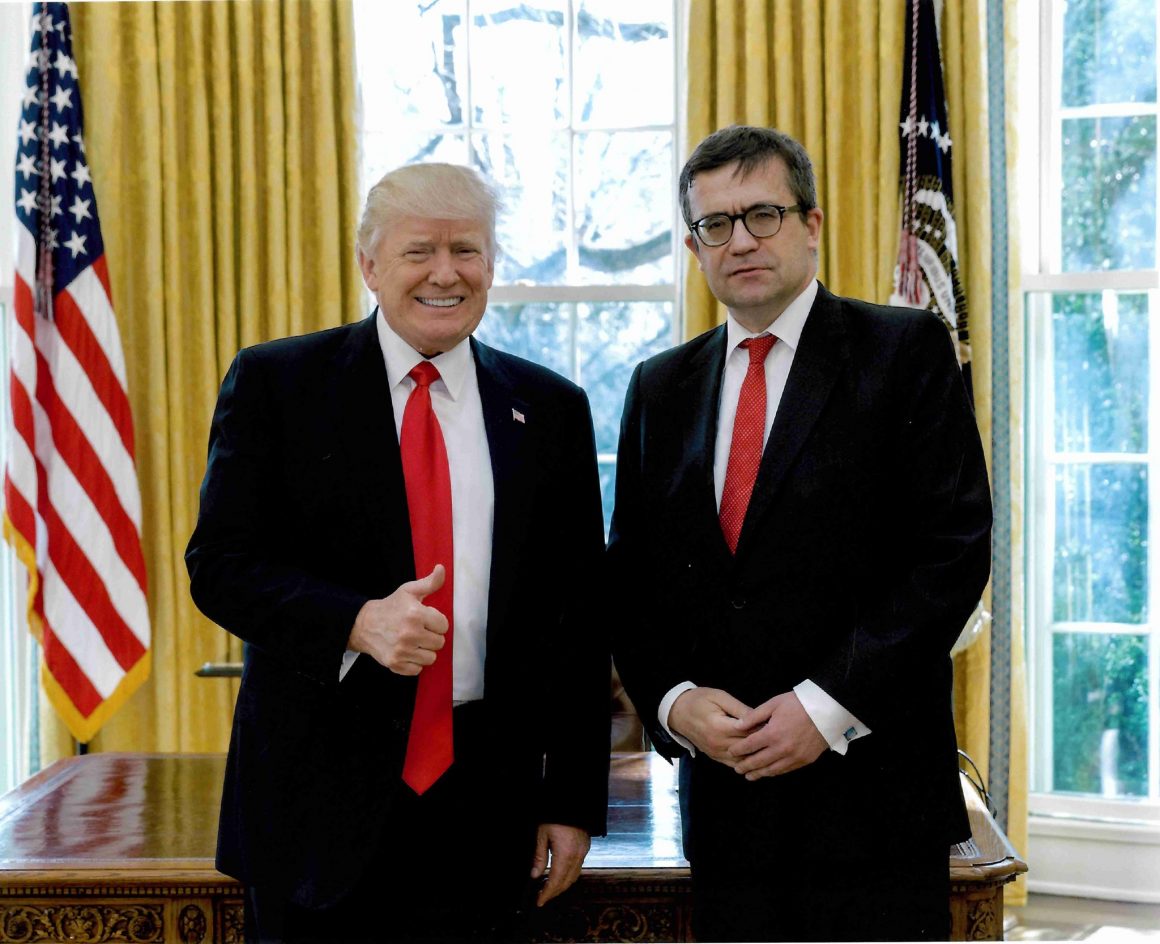
THE SIGNIFICANCE OF THE THREE SEAS PROJECT
In examining economic cooperation, it is important to mention the thorough efforts to involve the United States in the Three Seas Initiative, the latter of which encompasses twelve Central and Eastern European countries that cooperate to develop the transportation, energy and digital infrastructure of the region. American involvement, as I have already mentioned, first manifested in President Donald Trump’s participation in the Three Seas Summit in Warsaw in 2017. Further efforts resulted in the U.S.’ declaring its readiness to engage in the development of energy projects in the Three Seas region in the amount of USD 1 billion (which was confirmed by Secretary of State Mike Pompeo at the Munich Security Conference in February 2020). The funds are to be transferred by the International Development Finance Corporation (IDFC), a U.S. governmental agency, with the support of the U.S. Congress, and will serve to revive private investment in the energy sectors of the Three Seas. In particular, these funds can be allocated to improve the state of energy infrastructure in the region and to increase the flow of energy resources, especially gas. The Polish BGK bank, as the initiator and main shareholder of the Three Seas Investment Fund, is in constant contact with IDFC on the details of the American involvement in the Fund and on the financing of energy infrastructure in the Three Seas region. The primary outcome of the U.S. declaration should be to attract private investment from the U.S. and other countries into the energy, transportation and digital infrastructure of the Three Seas region.
ENERGY
Another important initiative that should be added to cooperation within the Three Seas project is the Partnership for Transatlantic Energy Cooperation (P-TEC). U.S. Secretary of Energy Rick Perry put forth the proposal for its establishment during the third Three Seas Summit in Bucharest in 2018. The Partnership’s primary goal is to develop energy cooperation between the U.S. and the Three Seas countries. The inaugural P-TEC summit took place on March 14, 2019 in Houston, and the second summit took place on October 7, 2019 in Vilnius, while the next summit is expected to take place in the fall of 2020 in the U.S., depending on the state of the coronavirus pandemic. Currently, four P-TEC working groups’ plans of action are being finalized for adoption during the next summit.
The agreement between Poland and the U.S. on a strategic dialogue in the field of energy was signed on November 9, 2018 in Warsaw by Minister Piotr Naimski and Energy Secretary Rick Perry. The Polish-American Strategic Energy Dialogue’s first meeting was held on March 12, 2019 in Houston. The third and most recent strategic energy dialogue took place on February 26, 2020 in Washington, D.C., and focused on cooperation in the areas of nuclear energy, natural gas, cybersecurity and clean coal technologies.
Specifics regarding energy cooperation in the supply of American LNG, which have helped Poland achieve independence from a previously dominant supplier, are presented in the table below.
| Centrica (a British firm that signed an agreement with PGNiG on the supply of American LNG ) | Venture Global Calcasieu Pass, LLC | Venture Global Plaquemines LNG, LLC | Port Arthur LNG, LLC (a subsidiary of Sempra Energy) | Cheniere | ||
| Date agreement signed | 11/21/2017 | 10/17/2018 | 10/17/2018 | 06/26/2018 | 11/08/2018 | |
| Year supply began | 2018 | 2023 | 2023 | 2023 | 2019 | |
| Year supply slated to end | 2022 | 2043 | 2043 | 2043 | 2042 | |
| Port of loading | Sabine Pass, LA | Calcasieu Pass, LA | Plaquemines LNG | Port Arthur, TX | Sabine Pass, LA/Corpus Christi, TX | |
| Annual deliveries in billion m3 | Annual deliveries in billion m3 | Annual deliveries in billion m3 | Annual deliveries in billion m3 | Annual deliveries in billion m3 | TOTAL ANNUAL DELIVERY VOLUME | |
| 2018 | 0.07 | 0.07 | ||||
| 2019 | 0.14 | 0.07 | 0.21 | |||
| 2020 | 0.14 | 0.14 | 0.28 | |||
| 2021 | 0.14 | 0.14 | 0.28 | |||
| 2022 | 0.14 | 0.21 | 0.35 | |||
| 2023 | 1 | 2.5 | 0.33 | 1.45 | 5.28 | |
| 2024-2042 | 1 | 2.5 | 2 | 1.45 | 6.95 | |
| 2043 | 1 | 2.5 | 2 | 5.5 | ||
| TOTAL DELIVERIES FROM INDIVIDUAL LNG SUPPLIERS | 0.63 | 21 | 52.5 | 40.33 | 29.56 |
In addition, it is worth mentioning the supply of American LNG to Ukraine in cooperation with Poland. On August 1, 2019, Rick Perry, Piotr Naimski and the Secretary of the National Security and Defense Council of Ukraine, Oleksandr Danyliuk, signed an agreement in Warsaw to cooperate in strengthening the security of the supply of natural gas in the region. The primary objective of this agreement is Ukraine’s access to American LNG. Currently, Poland may send approx. 1.5 billion cubic meters of gas to Ukraine; however, once construction of the Baltic Pipe gas pipeline and the expansion of the Świnoujście gas port is complete, the possibility of supplying LNG from the U.S. to Ukraine will increase. The first supply of American LNG to Ukraine with a volume of almost 100 million cubic meters (after regasification) arrived in Świnoujście in November 2019.
In accordance with Poland’s interests, the United States actively participated in stopping the implementation of the Nord Stream 2 (NS2) project through specific actions, namely:
– The Countering America’s Adversaries Through Sanctions Act: adopted by the House of Representatives on 07/25/2017, by the Senate on 07/27/2017 and signed by President D. Trump on 08/02/2017. For the time being, the USA has not invoked the provisions of this Act to impose sanctions against NS2;
– The National Defense Authorization Act, adopted by the House of Representatives on 12/09/2019 and by the Senate on 12/17/2019, and signed by President D. Trump on 12/20/2019. The Act includes sanctioning provisions directed against NS2 in the section of the Act entitled “Protecting Europe’s Energy Security.” The sanctions apply to ship operators working on the construction of Russian export gas pipelines, in particular NS2 and TurkStream, at depths of 30 meters below sea level and above. As a result, the Allseas company, specializing in laying offshore pipelines, withdrew from the implementation of NS2, which led to a delay in the implementation of this investment in Gazprom.

Congress is considering additional sanctions initiatives for NS2. On June 4, 2020, a new bill introducing sanctions on entities supporting the construction of the NS2 pipeline and authored by Senators T. Cruz (R-TX), J. Shaheen (D-NH), J. Barrasso (R-WY), T. Cotton (R-AR) and R. Johnson (R-WI) was brought forth in the Senate. Both T. Cruz and J. Shaheen were the authors of earlier provisions imposing sanctions on entities laying the pipeline on the seabed (“Protecting Europe’s Energy Security Act of 2019” – PEESA), which were adopted under the NDAA Act and caused AllSeas to withdraw its participation in the Russian project. The new act is titled, “Protecting Europe’s Energy Security Clarification Act of 2020,” and supplements those provisions. It introduces changes to the text adopted in December, significantly expanding the sanctions’ scope. The adoption of these provisions would effectively halt the construction of the NS2 gas pipeline and perhaps completely prevent its completion.
Polish-American cooperation in the field of civil nuclear energy is also developing. As mentioned above, in June 2019 an agreement on cooperation in the field of civil nuclear energy was signed. On November 18, 2019, the Polish-U.S. Nuclear Industry Forum took place in Warsaw, attended by about 200 representatives from the Polish and American nuclear energy sector.
5G
Poland has joined the United States allies’ in building a fifth generation wireless telecommunications network. In a joint Polish-U.S. declaration on the matter, signed on September 2, 2019 by Polish Prime Minister Mateusz Morawiecki and Vice President Mike Pence, both parties affirmed their readiness to strengthen cooperation on the development of 5G technology, a key instrument strengthening the future of international trade relations within the growing role of the digital economy. The declaration draws attention to the necessity of using proven and trusted suppliers of 5G network components due to the risk of manipulation and the generation of interference in the functioning of such networks.
DEFENSE AND SECURITY COOPERATION
On June 12 and September 23 of 2019, the Presidents of Poland and the U.S. signed two joint declarations on expanding defense cooperation, providing for an increase in the number of American soldiers stationed in Poland by one thousand (totaling approx. 5500 soldiers) and ensuring a permanent (enduring) U.S. military presence on Polish territory, as well as establishing the locations of individual projects;
- Poznań was designated as the headquarters of the Advanced Division and support group of the United States Army.
- Drawsko Pomorskie was designated as the headquarters of a joint combat training center used by the Armed Forces of Poland and the United States.
- Wrocław-Strachowice was designated as the headquarters of the United States Air Force loading and unloading base.
- Łask was designated as the headquarters of the United States Air Force squadron for remotely controlled aircraft.
- Powidz was designated as the headquarters of the air combat brigade and the battalion for combat logistics support, as well as a special forces facility.
- Lubliniec was designated as an additional headquarters for special forces.
The following are statistics regarding the current size of the U.S. military presence in Poland:
- There are approximately 4,500 soldiers and over 2,000 U.S. equipment units stationed in Poland.
- U.S. Armed Forces:
- Permanent presence (about 300 personnel) – Air Force training as part of the Aviation Detachment (from November 2012) and tied to the construction of the Aegis Ashore installation in Redzikowo (began in May 2016);
- Rotational training presence – there are about 3,000 soldiers and other members of the American staff, including over 1,000 units of military equipment located at various bases in Poland under U.S. command (the fifth, 9-month rotation of the armored brigade has taken place since October 2019 in various bases including the combat aviation brigade in Powidz).
- NATO forces:
- As part of the Alliance’s enhanced presence on the Eastern Flank (eFP), about 900 soldiers and about 240 units of American equipment are stationed in the battalion battle group deployed in Poland’s Orzysz / Bemów Piski and led by the U.S.
- In addition, the U.S. has commissioned 10 officers, the largest number to date at the multinational division command in Elbląg, to coordinate the activities of all four eFP groups (the other three were established in Lithuania, Latvia and Estonia).
- The above activities are implemented by the U.S. as part of the European Deterrence Initative. The American side participates in NATO’s eFP (enhanced Force Projection) (Orzysz), ensuring the land brigade’s rotational continuity and the modernization of military infrastructure.
From the perspective of transatlantic relations and the strengthening of NATO’s deterrence potential, the “DEFENDER-Europe 2020” exercises led by the U.S. were originally intended to serve as the largest military exercise in Europe in over 25 years, organized by the U.S. European Command and involving approximately 37,000 soldiers (including over 2,000 Polish counterparts) from the USA, totaling nearly 30,000. Overall, 18 countries were to participate in the exercise (16 NATO allies: Belgium, the Czech Republic, Denmark, Estonia, France, Spain, Canada, Lithuania, Latvia, the Netherlands, Germany, Poland, Hungary, Great Britain, Italy, the U.S. and two partner countries: Finland and Georgia). The main exercises of DEFENDER 2020 were to take place on the territory of 10 countries (Poland, Germany, Belgium, the Netherlands, the Czech Republic, Estonia, Georgia, Italy, Lithuania, and Latvia). Due to the COVID-19 pandemic, the scale of the exercises was limited. They were not, however, canceled, and a key element of the exercises was the transfer of U.S. forces to Europe.
THE PURCHASE AND PRODUCTION OF ARMS
The acquisition of F-35 aircraft by Poland was an important element of cooperation in the field of defense. On January 31, 2020 in Dublin, the Minister of National Defense signed a contract for the purchase and delivery of 32 F-35 multi-purpose aircraft for the Polish Air Force, in addition to a training and logistics package. During this ceremony, President Andrzej Duda highlighted the international context of the signed agreement:
“This is an important day for Polish military aviation, for the security of our Republic, and for the security of the entirety of our part of Europe. That we are able to purchase these planes, that they will serve as a part of the Polish Army and Polish aviation’s most advanced equipment, is primarily due to the fact that we are a member of the North Atlantic Alliance – an ally that fulfills its obligations. In short – a reliable partner.”
According to the Minister of National Defense, Mariusz Blaszczak, the fifth-generation F-35 aircraft possesses groundbreaking capabilities that will serve the Polish Air Force well, stating: “The F-35 aircraft is distinguished by its interoperability – it is capable of operating in tandem with the Patriot system, which we purchased in 2018, and with the F-16 aircraft, which we have had for several years, thus guaranteeing the security of our homeland. This is not simply rhetoric, but fulfilled commitments that build trust – commitments to our Polish pilots so that they can utilize the best-possible equipment.” Prime Minister Mateusz Morawiecki also drew attention to the ongoing technical modernization of the Polish Army: “The Army’s modernization is accelerating. In addition to the F-16, the excellent F-35 fighter jet will soon appear in our skies. The shadow of Russian domination that has loomed over this part of Europe, over our nation – which we expelled thirty years ago – will further distance itself from our Republic, allowing us to better ensure peace and security alongside other NATO members.”
Other important elements of Polish-American cooperation in the procurement of arms include:
- The medium-range, anti-aircraft and anti-missile system WISŁA / Patriot. The program has been divided into two phases – the FMS agreement regarding the first phase was signed on March 28, 2018. As part of it, Poland bought two Patriot system batteries. Deliveries are to be made by the end of 2022.
- HOMAR – the squadron-based assault unit comprised of multi-track rocket launchers. On February 13, 2019, an agreement was reached with the U.S. government on the supply of the first division squadron of the HOMAR rocket launcher (M142 HIMARS). The final delivery of military equipment covered by this contract is planned for 2023.
- The acquisition of C-130H aircraft: in accordance with a decision made by the U.S. Congress on March 28, 2019, 5 C-130H aircraft were awarded to Poland in the form of a grant as part of the EDA (Excess Defense Article Program). These aircraft are 15 years younger than the C-130E aircraft currently in service in the Polish Armed Forces.
It is also worth giving some examples of offers made by Polish defense companies to the U.S. One such case includes Lubawa S.A., which is engaged in talks on the supply of mobile and static camouflage for the U.S. Army. At the same time, negotiations are underway on the production of military vehicle simulation systems. Polish company WB Electronics has sold the Fonet internal communication system technology license to Harris Corp. These systems have been operating in HMMWV M1145 vehicles since 2016 and are designed for air support controllers. In 2018, the company opened its liaison office in the U.S. – WB America LLC., which deals with the design and integration of advanced communication and command systems, recognition and observation systems as well as fire and shock management systems. WB Electronics, in cooperation with HSW S.A. and WB America LLC., is considering the possibility of participating in the Future Indirect Fire Turret project – a mortar of the future for the U.S. Army – where it intends to propose a modified 120 mm RAK tower.
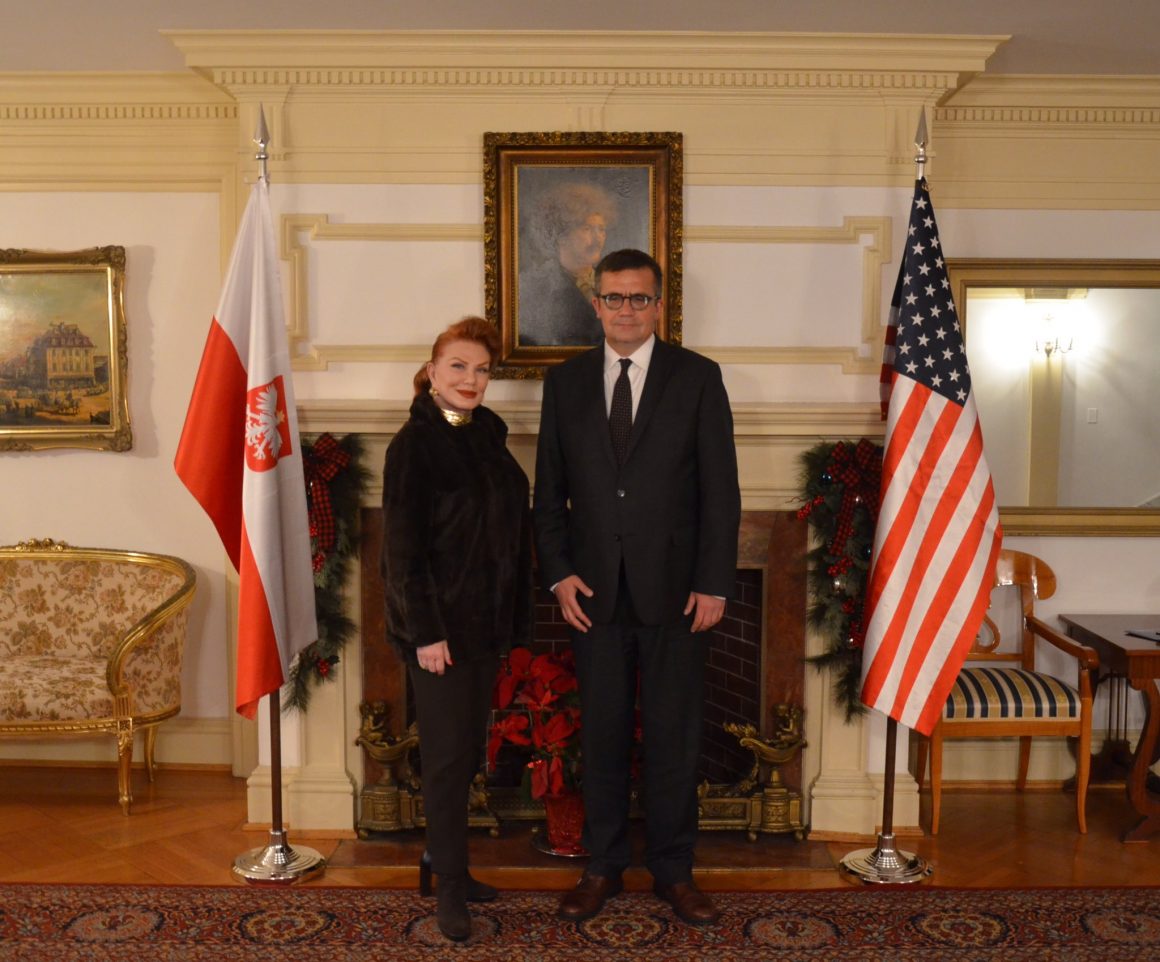
OTHER IMPORTANT PROJECTS RELATED TO POLAND-U.S. COOPERATION
The Warsaw Process
Persisting tensions in the Middle East that resulted from, among others, deteriorating U.S.-Iran relations after the U.S. withdrawal from the JCPOA, have prompted the U.S. in 2019 to seek a new international forum to discuss security in the region. The Polish side capitalized on this situation and, together with the United States, organized in Warsaw an international conference on peace and stability in the Middle East (February 14, 2019), which gave rise to the “Warsaw Process.” 60 countries took part in the event at various levels. In the fall of 2019, meetings of working groups within the Process were organized, including one in Washington and one in Warsaw. From the point of view of Polish-American bilateral relations, the Warsaw Process has allowed for closer cooperation at the political and expert levels. Within the media, the Warsaw Process remains one of the more visible initiatives affirming the close relationship between our two countries. The process continues through cooperation between individual working groups, whose appointments were announced during the February ministerial meeting. These groups will address issues that have been defined as security challenges in the Middle East: 1) cybersecurity; 2) energy security; 3) the non-proliferation of missile-based weaponry; 4) aviation and maritime safety; 5) humanitarian affairs and refugees; 6) combating terrorism.
Cooperation on matters pertaining to religious freedom
In 2018, Polish-American cooperation was expanded by another dimension – deepening cooperation in the field of international religious freedom. In this context, we should note the importance of Polish Minister of Foreign Affairs Jacek Czaputowicz’s participation in the first ministerial conference on these issues (Ministerial to Advance Religious Freedom) in Washington (July 25-27, 2018), as well as the signing of a letter of intent between the Chancellery of the Prime Minister and USAID regarding cooperation in assisting religious minorities in the Middle East. On July 17-18, 2019, Minister Jacek Czaputowicz participated in the second ministerial conference on promoting religious freedom. Thanks to the coordination efforts of the State Department, the Polish Embassy in Washington and the Polish Presidency of the UN Security Council, a resolution was adopted, establishing August 22 as the International Day Commemorating the Victims of Acts of Violence Based on Religion or Belief. The third ministerial conference planned in Warsaw in the summer of 2020 was postponed to September 2020 due to the coronavirus pandemic. In addition, Minister Jacek Czaputowicz took part in the inauguration of the Alliance for Freedom of Religion in Washington on February 5, 2020, at the invitation of U.S. Secretary of State Mike Pompeo.
Participation in the alliance, and the promotion and protection of freedom of religion or belief, is a priority for Polish foreign policy. We consistently call on international organizations to increase their activities within the scope of respecting the rights of religious minorities and ensuring their religious freedom, as well as the protection of victims of religious persecution. We have raised these issues with various bodies, including the UN General Assembly Third Committee, the UN Human Rights Council, the Council of Europe and the Organization for Security and Cooperation in Europe.
VISA WAIVER PROGRAM
An important milestone affecting Poland’s relations with the U.S. was Poland’s long-awaited ascension to the Visa Waiver Program on November 11, 2019. Over the years, efforts were made to help influential American political circles – the administration, Congress, public opinion and American think tanks – understand the benefits of abolishing tourist visas for Polish citizens. This was finally achieved in 2019 thanks to the commitment of President Andrzej Duda, President Donald Trump and Ambassador Georgette Mosbacher. Granting the right to exempt Polish citizens from the visa requirement in cases of tourist and business travel was possible once several formal requirements were met, such as reaching the maximum percentage of visa refusals required by U.S. law (3%), and the signing of several important agreements in 2019, mentioned above. Without these conditions, admission to the VWP would not be possible. It was, of course, a very long process – over 25 years in the making. We started with a very high level of rejected applications, but for years the stable and well-developing Polish economy, our EU membership and unrelenting GDP growth had a decidedly positive impact on the decline in refusals for Poles. As such, Poland’s admission to the visa-free travel program can primarily be attributed to Poles themselves and their hard work in developing their own country. The effects of this determination to succeed undeniably facilitated the current administration’s decision to take a fresh look at the possibility of extending the visa waiver program to Poland, even though in July 2017 a high-level administration official told me that “the U.S. will abolish the visa waiver program sooner than extend it to other countries.” The unprecedented pace of the last phase of this process would not have been possible without the involvement of both presidents and a favorable political climate regarding Poland’s candidacy to the VWP. It is also worth remembering the efforts of six organizations that formed a coalition to abolish the visa requirement for Poles, including the Innovative Poland Foundation, the Teraz Polska Foundation, the Cichociemnych Foundation, the Schuman Institute of Thoughts, LOT Polish Airlines and Mastercard.
We are pleased to have joined the 23 European Union members who enjoy visa-free status. It was a long-awaited decision, and I am deeply satisfied that the decision was reached during my tenure as Ambassador of Poland to the United States.
SCIENTIFIC COOPERATION
Currently, scientific cooperation is based on the Polish-American agreement on scientific and technical cooperation signed on April 23, 2018 in Washington, and is valid for ten years. The benefits of regulating cooperation in the form of an international agreement include, among others, the opportunity to build ties between scientists at various stages of their careers. In addition, participation in conferences and joint scientific research are of key importance for building a broad partnership between Poland and the U.S. The agreement makes it possible to establish closer cooperation between Polish and American government agencies responsible for the distribution of funds for scientific research. These activities will be overseen by Joint Committee Meetings. On July 13, 2018, an agreement was signed in Washington between the Ministry of Health and the Ministry of Science and Higher Education and the U.S Department of Health and Human Services on cooperation in the field of health and medical sciences. The agreement was signed for a period of five years and defines Polish-American cooperation in the field of biomedical sciences and health.
It is important to mention the Polish-American Scientific Award, which aims to strengthen the degree of cooperation between scientists from Poland and the U.S. The award is jointly granted by the Foundation for Polish Science and the American Association for the Advancement of Science, which distinguish researchers from Poland and the U.S. for outstanding achievements in the area of Polish-American scientific cooperation. The prize is awarded to pairs of scientists – one conducting research in Poland, and the other in the United States. The awards were granted in 2014, 2016 and 2018. In addition, it is worth emphasizing that in 2017, the National Committee on Foreign Medical Education and Accreditation (NCFMEA), which is part of the U.S. Department of Education, extended the American accreditation of Polish medical universities to September 2020.
CONCLUSION
In the overview above, I have attempted to examine some of the most important aspects behind the intensive development of Polish-American cooperation in the last four years. I aimed to present all of the facts and figures that best illustrate the current state of relations between our two countries. This review clearly shows that the United States is and will be a key partner of Poland’s, and recent years have greatly bolstered cooperation in all areas of strategic importance.

[1] According to Polish statistics, formed on the basis of a slightly different methodology, trade between Poland and the United States in 2019 amounted to USD 16.11 billion and was higher than that of 2018 by 7.6%. Polish commodity exports to the United States increased by 4.3% in 2019 and amounted to USD 7.59 billion (in comparison to USD 7.28 billion in 2018). The import of goods from the United States amounted to USD 8.52 billion in this period, denoting an increase by 10.7% compared to 2018. As a result, Poland’s trade deficit with the United States increased and amounted to USD 924 million.
All texts published by the Warsaw Institute Foundation may be disseminated on the condition that their origin is credited. Images may not be used without permission.















